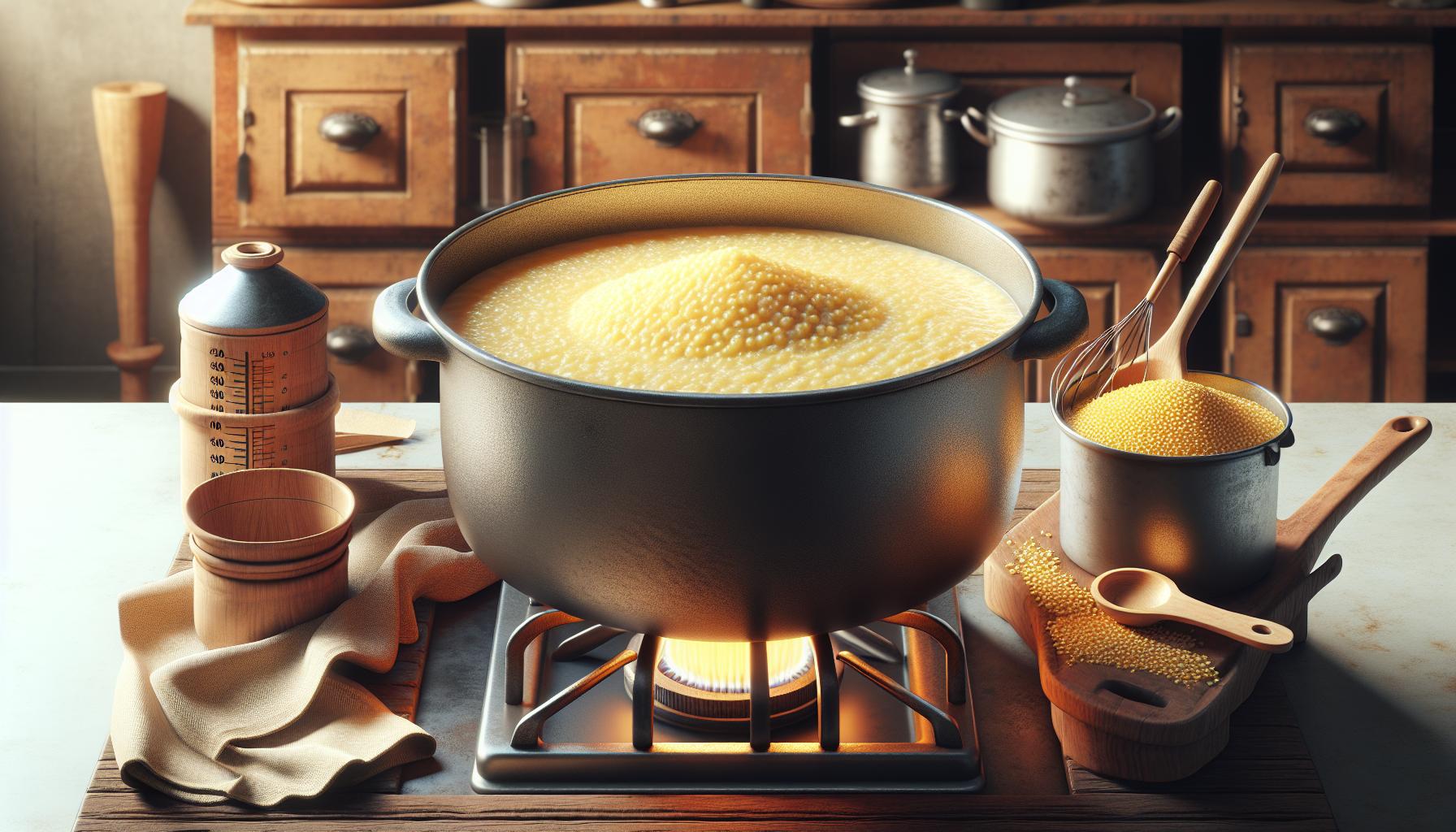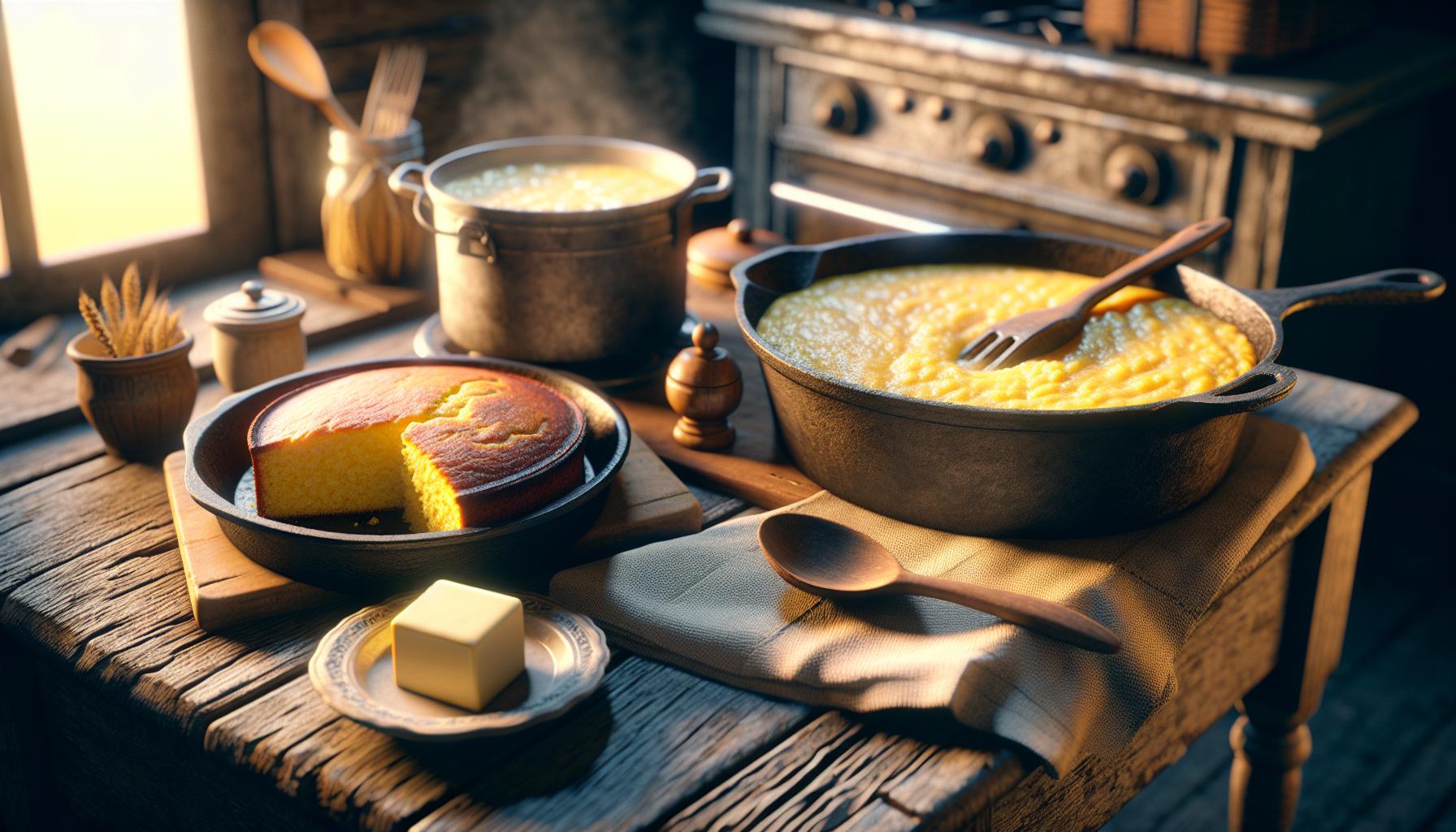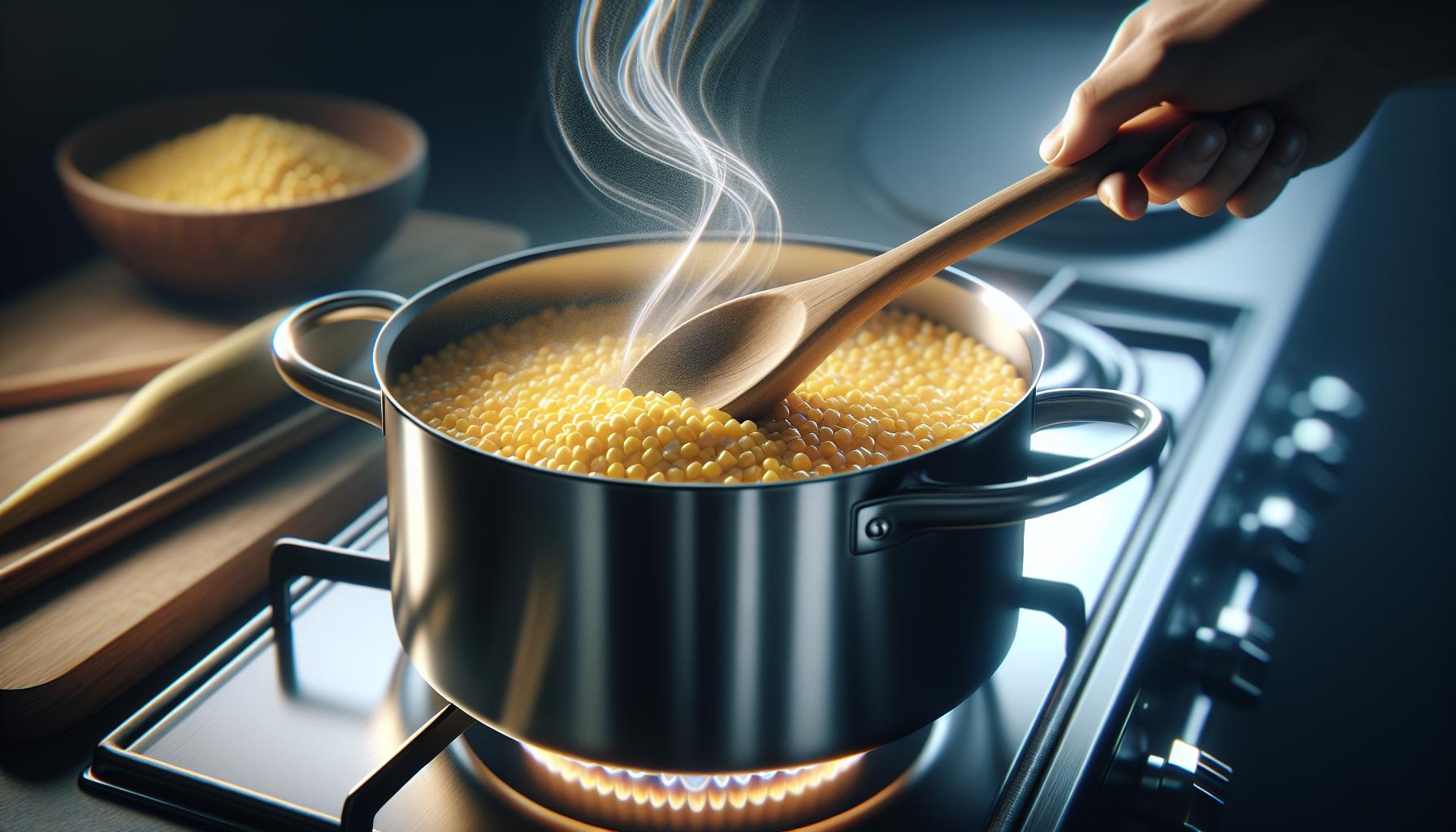Cornmeal is the unsung hero of countless comfort foods, from crispy Southern cornbread to creamy Italian polenta. While it might seem like a simple ingredient, mastering the art of cooking with cornmeal can transform ordinary dishes into extraordinary culinary experiences.
Whether you’re a seasoned chef or a kitchen novice, understanding the right cooking techniques for cornmeal is essential. It’s not just about dumping it into boiling water and hoping for the best – there’s a science to achieving that perfect texture and avoiding the dreaded lumps that can turn a promising dish into a grainy disaster. From achieving the ideal consistency to exploring different cooking methods, these techniques will help unlock cornmeal’s full potential in the kitchen.
Cooking Techniques For Cornmeal
Cornmeal consists of dried corn kernels ground into a fine, medium or coarse powder. This versatile grain product serves as a foundational ingredient in numerous global cuisines, from Southern American dishes to Mediterranean specialties.
Different Types of Cornmeal Grinds
Cornmeal comes in three distinct texture profiles:
- Fine Grind: Features powder-like particles similar to wheat flour, ideal for baking cakes or muffins
- Medium Grind: Contains grains measuring 2-3mm, perfect for cornbread or polenta
- Coarse Grind: Includes larger particles up to 5mm, excellent for grits or creating crispy coatings
The grinding process affects cooking time and final texture. Fine grinds cook quickly in 5-10 minutes while coarse varieties require 20-30 minutes to achieve the desired consistency.
Yellow vs White Cornmeal
Color variations in cornmeal stem from different corn varieties:
| Characteristic | Yellow Cornmeal | White Cornmeal |
|---|---|---|
| Flavor | Robust, earthy | Mild, subtle |
| Protein Content | 8-10g per cup | 7-9g per cup |
| Common Uses | Polenta, grits | Southern cornbread |
| Regional Origin | Northern US | Southern US |
Yellow cornmeal contains more beta carotene creating its golden hue. White cornmeal offers a neutral backdrop for other ingredients. Both varieties maintain identical cooking properties though regional preferences influence their typical applications.
Basic Cornmeal Cooking Methods

Cornmeal transforms into versatile dishes through specific cooking techniques for cornmeal that maximize its flavor and texture. Each method requires precise temperature control and liquid ratios to achieve optimal results.
Boiling and Simmering Techniques
Boiling cornmeal starts with a 4:1 ratio of liquid to cornmeal in a heavy-bottomed pot. The liquid reaches a rolling boil at 212°F (100°C) before adding the cornmeal in a steady stream while whisking continuously to prevent lumps. Reducing heat maintains a gentle simmer at 185°F (85°C) for 15-20 minutes for fine-ground cornmeal or 30-40 minutes for coarse varieties. Stirring occurs every 3-5 minutes to create a smooth consistency. Adding 1 tablespoon of butter or oil per cup of cornmeal prevents clumping during the cooking process.
Baking with Cornmeal
Cornmeal adds texture and structure to baked goods when combined with wheat flour in a 1:3 ratio. The temperature range of 375-425°F (190-218°C) creates optimal browning and crispness. Preheating cast iron or baking vessels for 10 minutes before adding cornmeal batters improves crust development. Cornmeal absorbs 25% more liquid than wheat flour, requiring precise measurement of wet ingredients. Quick breads incorporate 1 teaspoon of leavening agent per cup of cornmeal to ensure proper rise. Stone-ground varieties provide superior flavor in baked applications.
Traditional Cornmeal Dishes

Cornmeal forms the foundation of numerous traditional dishes across cultures. These time-honored recipes showcase the versatility of cornmeal through distinct preparation methods.
Making Perfect Polenta
Polenta transforms coarse cornmeal into a creamy Italian staple through constant stirring. A 3:1 ratio of liquid to cornmeal creates the optimal consistency, with water or stock heated to 200°F before adding the cornmeal in a steady stream. Stirring continuously for 30-40 minutes prevents lumps while developing a silky texture. Professional chefs incorporate 2 tablespoons of butter and ¼ cup of Parmigiano-Reggiano cheese per cup of cornmeal at the end of cooking to enhance flavor. The finished polenta holds its shape when poured onto a wooden board yet remains soft enough to form peaks when stirred.
Southern Style Cornbread
Southern cornbread starts with preheating a cast iron skillet in a 450°F oven with 2 tablespoons of bacon fat or oil. A mixture of 2 cups cornmeal, 1 cup buttermilk, 1 egg, ½ teaspoon baking soda creates authentic southern texture. The batter sizzles when poured into the hot skillet, forming a golden brown crust during 20 minutes of baking. Traditional southern cornbread contains minimal sugar, letting the natural corn flavor shine through. Cornbread served straight from the skillet maintains optimal temperature for serving with butter or honey.
Common Mistakes to Avoid When Cooking Cornmeal

Successful cornmeal preparation relies on precise techniques and attention to detail. Several critical errors can affect the final texture and taste of cornmeal dishes.
Temperature Control Tips
Temperature fluctuations create lumpy or unevenly cooked cornmeal. Starting with cold liquid causes cornmeal to clump instantly on contact. Maintaining consistent heat throughout the cooking process prevents a gritty texture. Medium-low heat provides optimal results for stovetop cooking. A digital thermometer ensures the cooking temperature stays between 185°F and 195°F for proper gelatinization. Excessive heat leads to scorching at the bottom of the pan while leaving the top layer undercooked. Reducing the heat once the mixture comes to a boil prevents burning and allows even distribution of heat.
| Cooking Method | Liquid-to-Cornmeal Ratio |
|---|---|
| Polenta | 3:1 to 4:1 |
| Cornbread | 2:1 |
| Grits | 4:1 to 5:1 |
| Porridge | 3.5:1 |
Creative Ways to Use Cornmeal
Cornmeal extends beyond traditional recipes to create unique culinary experiences. These innovative applications showcase cornmeal’s versatility in both savory and sweet dishes.
Coating and Breading
Cornmeal creates a crispy exterior on fried foods while maintaining interior moisture. A mixture of 2 parts cornmeal to 1 part flour produces an ideal coating for fish, chicken or vegetables. Adding spices like paprika, garlic powder or black pepper to the cornmeal mixture enhances flavor profiles. The coating process involves dredging food items in seasoned cornmeal after dipping them in beaten egg. For extra crunchiness, double-coating involves repeating this process twice before frying at 350°F (175°C).
Alternative Cooking Applications
Cornmeal transforms into unexpected culinary elements through creative preparation methods. Sprinkling coarse cornmeal on pizza stones prevents dough from sticking while adding texture. Creating a cornmeal crust for cheesecakes offers a distinctive alternative to graham crackers. Fine cornmeal works as a thickening agent in soups, stews or gravies, using 1 tablespoon per cup of liquid. Incorporating cornmeal into cookie dough at a 1:3 ratio with flour adds a subtle crunch. Cornmeal also serves as a natural exfoliant in homemade beauty products or as a non-stick agent for baking surfaces.
World of Culinary Possibilities
Mastering cooking techniques for cornmeal opens up a world of culinary possibilities. From creamy polenta to crispy-crusted cornbread this versatile ingredient adds unique texture and flavor to both traditional and modern dishes. Understanding the proper ratios liquid temperatures and cooking methods ensures success in the kitchen.
The key to exceptional cornmeal dishes lies in selecting the right grind size for each recipe and maintaining precise temperature control. Whether it’s creating the perfect Southern cornbread or exploring innovative applications home cooks can elevate their culinary creations by applying these essential cooking techniques for cornmeal and avoiding common pitfalls.

